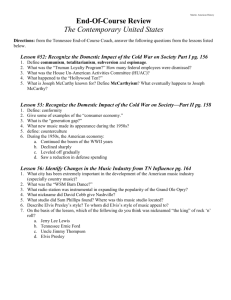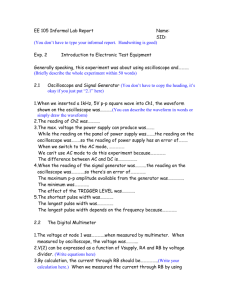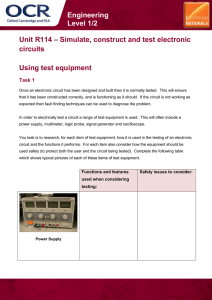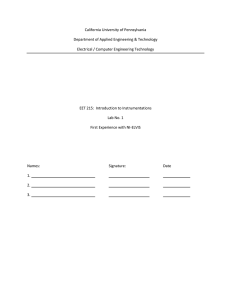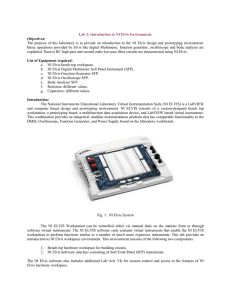tips and tricks document - Mechatronics and Measurement Systems
advertisement
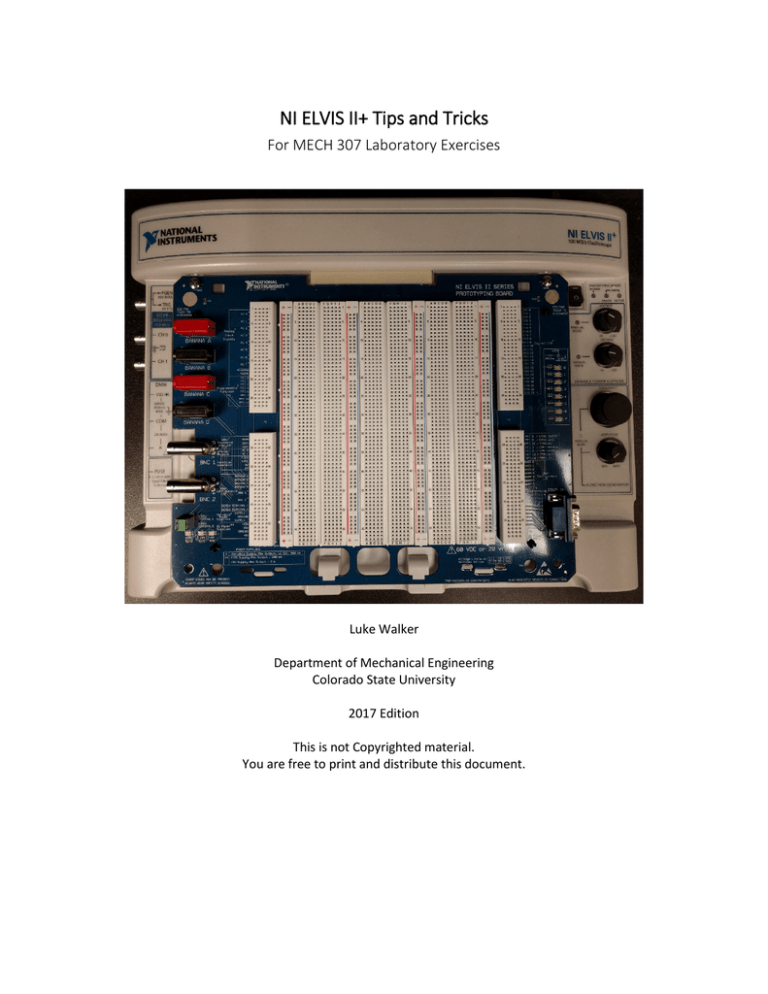
NI ELVIS II+ Tips and Tricks For MECH 307 Laboratory Exercises Luke Walker Department of Mechanical Engineering Colorado State University 2017 Edition This is not Copyrighted material. You are free to print and distribute this document. Introduction The NI ELVIS II+ is an educational laboratory platform that can replace benchtop equipment such as power supply, multimeter, function generator, and power supply. This guide is to get you familiar with how to use the NI ELVIS II+’s main functions and provide troubleshooting advice. NI ELVISmx Instrument Launcher The NI ELVISmx Instrument launcher is the most convenient place to find the instruments and is shown in Figure 1 below Figure 1 NI ELVISmx Instrument Launcher From here you can open any of the instruments required. There will be times that you will want to have multiple open. The NI ELVISmx Instrument Launcher can be found in the start menu or by searching the C:\ Digital Multimeter A screenshot of the Digital Multimeter can be found in Figure 2 below: Figure 2 Digital Multimeter The Digital Multimeter allows for measuring both AC and DC voltages, current as well as resistance, capacitance, inductance, diode, and continuity. Be sure that the ELVIS II+ is selected in the devices and the Banana Jack Connections are connected as shown in the diagram. When you change the type of measurement the Banana Jack Connections will change. Once all the settings are configured hit run and perform your measurement. Function Generator A screenshot of the Function Generator can be seen in Figure 3 below Figure 3 Function Generator The Function Generator can output a sine, triangle, or square wave at a frequency from 200 mHz to 5 MHz. The amplitude can be adjusted from 0 to 10.0 Vpp and the DC offset can be set from -5.0 V to 5.0 V. A sweep can be performed by inputting the desired range, step, and step interval and then hitting the sweep button. Ensure that the ELVIS II+ device and connect signal route are selected. Once all the settings are configured then hit run. Oscilloscope A screenshot of the Oscilloscope can be found in Figure 4 below Figure 4 Oscilloscope The Oscilloscope has two separate channels and read the signal from SCOPE CH 0 directly on the ELVIS or AI0 to AI7 on the PROTOBOARD. After ensuring that the probe setting matches the connected probe you can hit run and autoscale to find the signal. If that does not work follow the steps outlined in the Lab Manual. Once the signal is displayed the cursors can be used and graph properties turned on to show RMS, Frequency, and Vpp. Variable Power Supplies A screenshot of the Variable Power supply can be found in Figure 5 below Figure 5 Variable Power Supply The Variable Power Supply can go between 0 and 12 volts positive and negative and perform a power sweep. Make sure the EVLIS II+ shows up under device and that all the settings are correct before hitting run. If you need either ±5V or ±15V you can connect directly to the connections on the bottom left of the PROTOBOARD. If there isn’t enough current for your circuit then use the benchtop power supply for more power. Note: Variable power supply max 12VDC 500 mA ±15 V power supply max 500 mA ±5 V power supply max 2A Troubleshooting Steps At some point you will build a circuit, connect the power, and expect something to happen and it won’t. I would suggest going through the following steps: 1. Check to make sure ELVIS (switch in back) and PPROTOTYPING BOARD (switch on top right) are powered on and connected to the computer 2. Ensure the device you are trying to use is plugged into the same channel on either the PROTOBOARD or ELVIS that is displayed on the computer. For example if you are using the Oscilloscope on source SCOPE CH 0 make sure your scope probe is plugged into CH 0 on the ELVIS . 3. Check voltages with the multimeter function to ensure you are getting adequate power to your circuit. 4. Check to ensure all wires are connected correctly and have connectivity.

